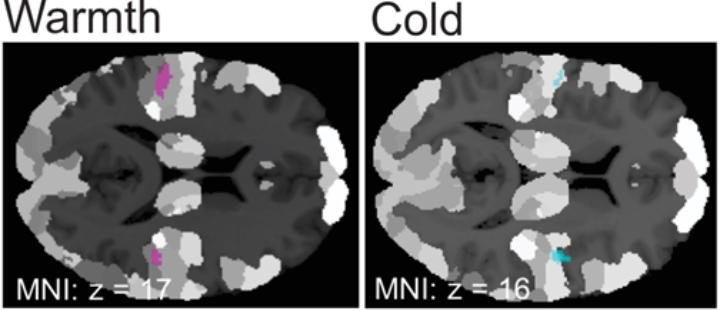Most communication devices such as mobile phones rely on 3 senses: sound, vision, and haptic touch (i.e. vibration). The sense of temperature has never been used in commercial devices, because people have considered it too weak for information transmission. However, new research from CiNet shows that the sense of temperature is much more powerful than previously thought.
Hiroaki Mano and colleagues, with collaborators from UCL in London, have been studying what happens if people repeatedly try to detect small changes in temperature. They trained people to discriminate sub-degree fluctuations of either warm or cold metal probes, and scanned the brain using functional magnetic resonance imaging. They found that not only can humans detect extremely small changes in temperature (often as low as 0.3C), but they continually improve will with experience. Furthermore, using brain scanning they found that the brain has separate modules for warmth and cold detection, meaning that the brain actually has multiple independent channels for sensing temperature (see image).
‘The results surprised us, because we realised just how sophisticated the human temperature sense is’, said Dr Mano, who performed the research. Dr Mano also pointed out that the sense of temperature is tightly connected with human emotion, because it is linked with basic human drives to find warmth when we are cold, and cool when we get too hot. In the brain, it can be seen that temperature responses are strongly connected with primitive brain structures involved in basic emotion.
Dr Mano and colleagues suggest that this means that it could become an ideal communication channel to be used alongside conventional ICT methods, for example used in conjunction with conventional text and sound. Its ability to add depth and richness in the information that people communicate with each other suggest it could be a new way to enhance human communication.
Reference:
Mano H, Yoshida W, Shibata K, Zhang S, Koltzenburg M, Kawato M, Seymour B.
Thermosensory perceptual learning is associated with structural brain changes in parietal-opercular (SII) cortex.
Journal of Neuroscience, 2017, URL: http://www.jneurosci.org/content/37/39/9380

